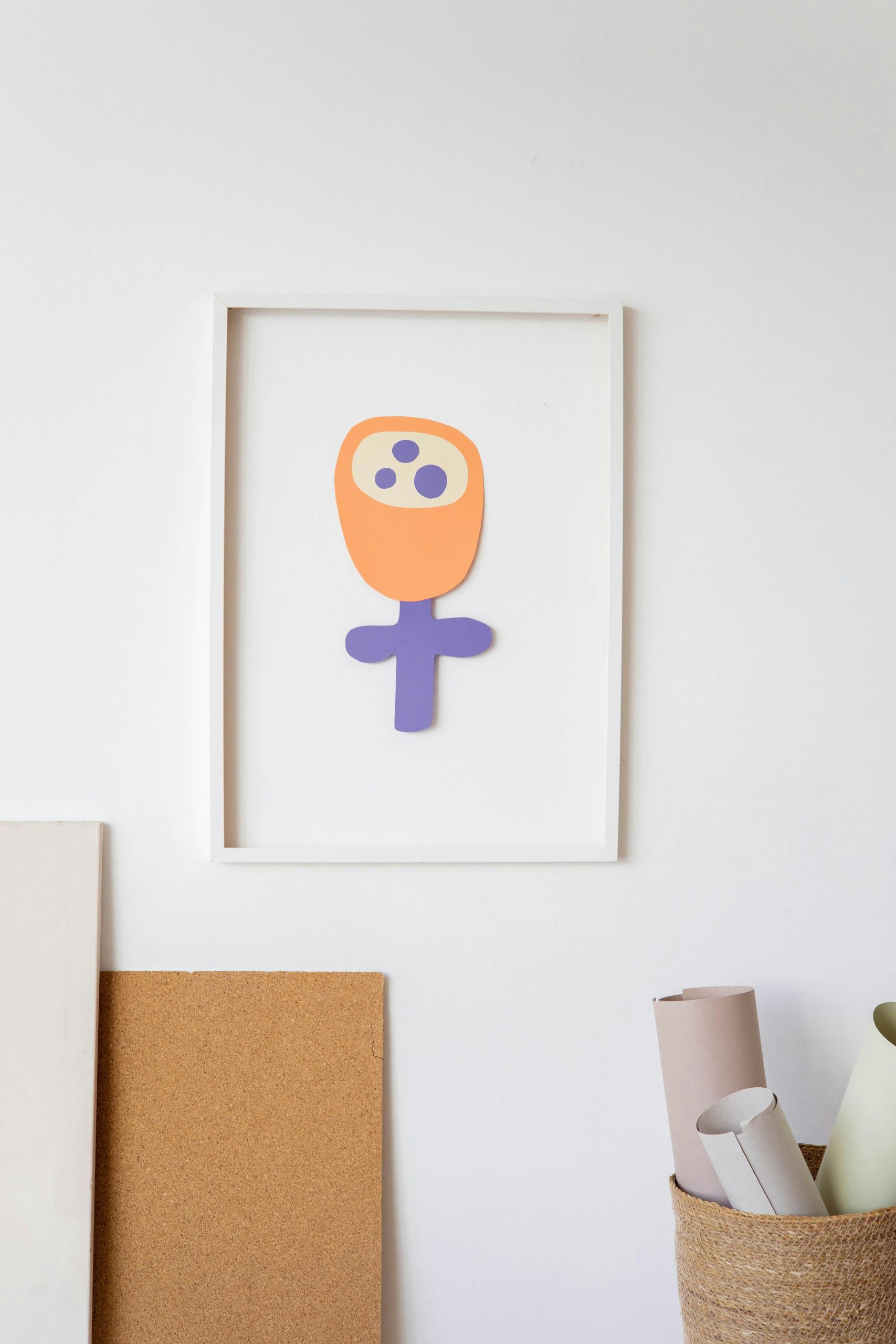An Overview of Children’s Creativity and Innovation

Innovation and creativity, which are frequently combined, are the foundations of a child’s capacity to see the world as full of limitless possibilities. The ability to see the world in fresh ways, recognize hidden patterns, and draw connections between seemingly unrelated events is what defines creativity, the art of bringing new and imaginative ideas to life. However, innovation is the application of these concepts in real life, turning them into solutions or products that are beneficial. Nurturing these attributes from an early age is not only advantageous but also necessary. It establishes the framework for a way of thinking that is driven by curiosity, problem-solving skills, and the bravery to venture into unknown areas.
- Beyond just enhancing one’s own happiness, children’s creativity and inventiveness have many positive effects.
- They play a crucial role in academic achievement by encouraging a desire to learn as well as the capacity for critical thought and problem-solving.
- As a result, they become more equipped to deal with change, take on obstacles, and make valuable contributions to society in the future.
Early encouragement of these traits kindles a lifelong love of learning and a curiosity for exploration, putting kids on the path to becoming self-assured, resourceful, and resilient adults.
Understanding the Obstacles to Originality

While encouraging children’s creativity and innovation is vital, it’s also critical to identify the obstacles that may be stifling their creative spirit. Pressures from society and education frequently create a limited path to success that places a strong emphasis on traditional accomplishments. Children’s innate creativity and curiosity may be stifled by this environment.
- Fear of not succeeding and being judged looms large. Sensitive to the opinions of adults and peers, children may withhold their original ideas in order to prevent embarrassment or criticism.
- They are unable to take the necessary risks that come with creative endeavors because of this crippling fear.
- Furthermore, schools’ overemphasis on rote learning and standardized testing further stifles the growth of original thought.
Overcoming these obstacles is crucial. We can create an environment that nurtures and celebrates each child’s innovative spirit by understanding and reducing the pressures, fears, and educational practices that stifle creativity. We open the door for a creative and innovative future by encouraging them to embrace their distinctive viewpoints and ideas.
The Environment’s Function in Fostering Creativity

Environments that promote play and exploration foster creativity. The foundation for creative thinking is a home that is stimulating and full of opportunities for imaginative play. Through the incorporation of varied resources like books, art supplies, and musical instruments, kids are encouraged to experiment with different forms of expression. Their experience is enhanced and their creative horizons are expanded by this variety.
Building an Invigorating At-Home Space
It doesn’t take a lot of resources to design a home environment that inspires creativity. Small changes, like making a reading nook or designating a corner for crafts and art, can have a big impact. The secret is to establish a space where kids can express themselves, try new things, and make mistakes without worrying about getting in trouble. Such areas encourage unstructured play, which is essential for the growth of creative ideas.
The Value of Play and Discovery
Children learn languages through play. They pick up knowledge about their surroundings through play. Promoting diverse forms of play, ranging from solitary to social, and from physical to cognitive, guarantees comprehensive growth. Children are especially exposed to nature’s endless canvas through outdoor play, which piques their interest and sense of wonder.
- Guidelines regarding physical activity are provided by the Department of Health of the Australian Government that emphasize how crucial play is to kids’ growth and well-being.
The Benefits of Promoting Outdoor Activities and Reducing Screen Time
Screen time is a major concern in this digital age. Although technology can be a useful teaching tool, spending too much time in front of a screen can reduce creativity by preventing face-to-face interactions and real-world exploration. In addition to lowering screen time, outdoor activities improve physical health and offer sensory experiences that are essential for the growth of creativity. The screen time guidelines of the Australian Government provide helpful guidance on striking a balance between online and offline activities.
- Reducing screen time doesn’t mean doing away with it completely; rather, it means making sure it’s just one of many activities that help kids be creative.
- Fostering physical activities, outdoor play, and nature interaction can all greatly expand a child’s capacity for imagination.
We give our kids the skills they need to innovate and think creatively by creating an atmosphere that values play, creativity, and exploration. This sets them up for success in the future.
The Value of Mentors and Role Models

An important factor in determining how a child approaches creativity and innovation is their mentors and role models. For young minds, parents, educators, and community leaders are the primary role models. They set an example of perseverance and creative thinking through their behaviors and attitudes. They have a significant impact and set the bar for inquiry and discovery.
This learning environment is further enhanced by telling the tales of innovators and creative thinkers. These stories, which are replete with difficulties, setbacks, and victories, provide priceless insights into fortitude and the potency of original thought. They reinforce the notion that setbacks are necessary for success by encouraging kids to dream big and keep going after their artistic goals.
Offering mentorship and teamwork opportunities creates endless opportunities. Children who receive mentorship have the opportunity to receive direction, support, and criticism from seasoned adults who have successfully traversed their own artistic paths. Conversely, collaboration helps them learn about the benefits and difficulties of teamwork, creating a feeling of belonging and common goal. When combined, these encounters create a nurturing atmosphere that encourages kids to explore, try new things, and share their original ideas.
It takes a village to foster innovation and creativity in kids. We offer opportunities for mentorship and collaboration, inspire them with stories, and surround them with positive role models so that in the future they can not only envision, but also create a world of limitless possibilities.
Useful Tasks to Promote Creative Expression

Getting kids involved in practical activities that pique their curiosity and imagination can go a long way toward unleashing their creative potential.
- Projects involving art and crafts provide a platform for experimentation. We not only help children develop their artistic abilities but also instill a sense of creativity by encouraging them to experiment with different materials, play with textures, and blend colors.
- Projects involving science and technology are very helpful in encouraging research and creativity. Through building basic machines, examining chemical reactions, or creating their initial computer program, kids acquire the ability to challenge, speculate, and verify their concepts.
- Exercises involving writing and storytelling stimulate the creative mind. Children go on adventures, discover new worlds, and enter the heads of a variety of characters when they write their own stories.
When combined, these exercises offer a thorough method for fostering children’s inventiveness and creativity. We give them the means to explore, experiment, and express themselves through chances for creative expression, scientific inquiry, and imaginative storytelling. Using a holistic approach guarantees that kids are enthusiastic about learning and exploration in addition to being ready for the challenges of the future.
Developing a Growth Mentality

The growth mindset, or the conviction that skills can be acquired via commitment and effort, is the foundation of creativity and innovation. Children who adopt this mindset are more likely to welcome challenges, overcome obstacles head-on, and see failure as a learning opportunity rather than a sign of weakness. It is essential for children to develop such a mindset in order for them to pursue innovative and creative endeavors.
Taking on New Challenges and Gaining Knowledge from Setbacks
- It is essential to teach kids to view obstacles as opportunities rather than challenges. Children who are taught to confront challenges head-on grow resilient and gain the self-assurance to try new things.
- Encouraging them to see failures as teaching opportunities rather than as setbacks encourages a positive attitude toward taking risks and experimenting, two things that are crucial to creativity and innovation.
Promoting Inquisitiveness and a Passion for Acquiring Knowledge
Creative ideas flourish in an inquisitive mind. We ignite a passion for discovery by creating an atmosphere where inquiries are encouraged and exploration is welcomed. Children’s enthusiasm for learning encourages them to explore topics more thoroughly, look for fresh experiences, and keep an open mind to new concepts, which fosters their capacity for creativity and innovation.
Tips for Teachers and Parents
- The role of parents and educators is crucial in promoting a growth mindset. A strong example is set for children by exhibiting a passion for learning, fortitude in the face of adversity, and openness to new experiences.
- Strategies that reinforce the value of perseverance and continuous improvement include encouraging reflective practices, offering constructive feedback, and celebrating effort rather than natural talent.
Adults can encourage children to embrace a growth mindset and provide the groundwork for a lifetime of creativity and innovation by modeling these values.
In Conclusion
Our future is shaped by our creative nurturing. It cultivates joy and resiliency in the face of adversity. Children can be made more creative and problem-solving capable when we create environments that value mentorship and promote exploration. This trip, full of chances for development and education, equips them for a world waiting for their contributions. We should make a commitment to encouraging the upcoming generation of inventors and creators because they hold the key to a more promising and creative future.
Encouraging Creativity and Innovation in Children FAQs
Yes, reading books can significantly increase a child’s creativity by exposing them to different worlds, characters, and perspectives. This not only enhances their imagination but also improves their empathy and problem-solving skills. Encouraging children to read a wide variety of genres and authors can further broaden their creative horizons.
Creating a conducive environment for creativity at home involves setting up a dedicated space where your child can freely express their ideas without fear of making a mess or being judged. This space should be stocked with various materials and tools that inspire exploration and creativity. Additionally, ensuring that this area is free from unnecessary distractions can help children focus on their creative projects.
Encouraging creativity in your child can be achieved by providing them with a variety of materials and opportunities for open-ended play. This allows them to explore their interests and ideas in a supportive environment. Encourage their efforts and ideas without focusing solely on the end result to foster a love for creative expression.
Technology can be used to encourage creativity in children by providing them with digital tools and platforms that offer new ways to express their ideas and creativity. Apps and software that focus on art, music, coding, or design can inspire children to create something unique and learn new skills in the process. However, it’s important to balance screen time with offline creative activities to ensure a healthy development.
Collaborative projects enhance creativity and innovation in children by allowing them to share ideas, learn from others, and develop social skills. Working in a group encourages children to think critically and consider different viewpoints, which can lead to more innovative solutions. It also teaches them the value of teamwork and communication in the creative process.
Encouraging creativity in children benefits their future by equipping them with the ability to think critically, solve complex problems, and adapt to new situations. These skills are highly valued in the workforce and can lead to success in various fields. Furthermore, creative individuals are often more resilient and better at coping with challenges, making them well-prepared for the uncertainties of the future.
Activities that challenge children to think outside the box, such as brainstorming, problem-solving tasks, and open-ended projects, can help develop creative thinking skills. These activities encourage children to view problems from different perspectives and come up with innovative solutions. Providing feedback and asking open-ended questions during these activities can further enhance their creative thinking abilities.
Play is fundamentally important in encouraging creativity and innovation as it allows children to experiment, solve problems, and think in abstract ways. Through play, children can explore different roles, scenarios, and ideas, which enhances their creative thinking and ability to innovate. It also helps in developing their social and emotional skills, which are crucial for collaborative innovation.
The role of a parent or educator in nurturing creativity is to provide support, encouragement, and the resources necessary for creative expression. This involves creating a safe and open environment where children feel comfortable taking risks and expressing their ideas. It’s also important to model creative behavior and provide constructive feedback to help children refine their creative skills and confidence.
Failure is a crucial part of fostering innovation in children as it teaches resilience and problem-solving skills. By experiencing failure, children learn to think critically and adapt their strategies, which is essential for innovative thinking. It’s important to frame failures as learning opportunities rather than setbacks.

Jasmine Duque-Love is a mother of one and a practicing physiotherapist with a Phd in Physiotherapy

